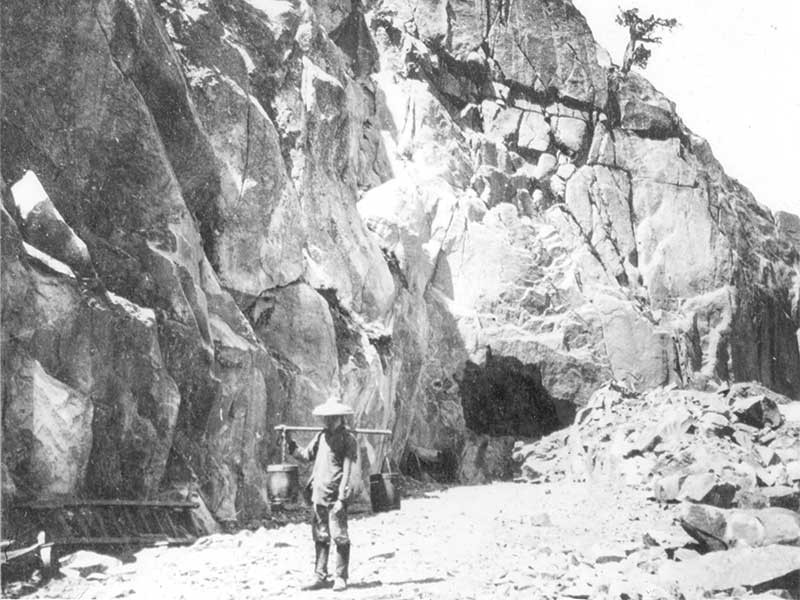The Transcontinental Railroad stands as a monumental achievement in American history, symbolizing not only the unification of disparate territories but also the relentless pursuit of progress. As this massive engineering feat commenced in the mid-19th century, one often overlooked facet of its construction was the significant contribution of Chinese laborers. What challenges arise when we position these laborers within the framework of cultural relativism? This inquiry invites a deeper understanding of their pivotal role and the broader social implications.
In the context of the Transcontinental Railroad, the narrative typically highlights the industriousness of the American workforce, while Chinese laborers are frequently relegated to the background. Yet, their contributions were indispensable. The Central Pacific Railroad Company employed thousands of Chinese immigrants, many of whom had fled the hardships of the Taiping Rebellion, the desperate conditions following the Gold Rush, and other socio-economic adversities. This backdrop prompts us to wonder: how might our perception of these laborers shift if viewed through a cultural relativism lens?
Cultural relativism posits that one should understand individuals within the context of their own cultural backgrounds and societal norms. When we apply this perspective to Chinese laborers, we see a community that brought with it rich cultural traditions and an indomitable spirit. They were not merely laborers, but skilled workers who applied techniques and knowledge acquired over centuries. Operating under challenging conditions, these individuals built the very backbone of transportation that catalyzed the West’s economic expansion.
The experience of Chinese laborers on the railroad was fraught with adversity. They faced arduous working conditions, with many enduring long hours of grueling labor amidst perilous landscapes. The Sierra Nevada mountains presented insurmountable challenges, often involving dangerous blasting operations to forge tunnels through granite barriers. Yet, amidst this hardship lay a profound sense of community and resilience. Would the camaraderie and cultural practices of the workers be differently revered if viewed through a lens appreciating their traditions and values rather than simply their output?
Integration of cultural relativism highlights this complexity. Rather than viewing the laborers as mere victims of circumstance, we begin to uncover stories of agency and adaptability. Chinese workers utilized their own labor systems, established social networks, and engaged in cultural expressions such as the lunar new year celebrations, which fortified their resolve and morale. These elements of their cultural identity reveal the profound resilience of a people confronted with exclusion and prejudice. What if we reframed their narrative not solely around oppression, but as a testament to cultural survival and adaptation?
Moreover, the exploitation faced by Chinese laborers cannot be overlooked. Anti-Chinese sentiment surged during this period, fueled by economic fears and racial prejudices. This led to systemic discrimination, including exclusionary laws aimed at Chinese immigrants. The challenge here lies in reconciling this grim aspect of their experience with the triumphs of their contributions. Can we simultaneously honor their hardships and acknowledge the crucial roles they played in transforming the American landscape?
In examining how cultural relativism shapes our understanding, we gain insight into the broader implications of identity, labor, and belonging. Consider the juxtaposition of American ideals of freedom and opportunity with the experiences of these laborers who sought refuge from turmoil yet encountered new forms of marginalization. They were often relegated to menial positions despite their skills, perceived through a lens that stripped them of their humanity. Envisioning their plight through a culturally relative framework compels one to question dominant narratives that are too frequently simplified.
The contributions of Chinese workers extend beyond the physical tracks they laid; they represent a significant chapter in the story of labor in America. The very act of recognizing their input shapes contemporary discussions on race, ethnicity, and the evolution of labor rights. How might our contemporary labor movements benefit from learning from the resilience exhibited by these workers? Their memories echo in the conversations surrounding labor rights today, serving as a warning against the perils of exclusion and discrimination.
The complex reflections of Chinese laborers challenge us to reconstruct our historical narratives. Embracing cultural relativism broadens the discourse surrounding the Transcontinental Railroad. It enables us to appreciate the synthesis of cultural identities that contributed to this monumental project. These laborers were not simply cogs in the economic machine of their time; they were agents of their own narratives who shaped the fabric of American society as we know it. Understanding their contributions through this lens encourages a more nuanced discussion of inclusivity, equity, and the diverse narratives that form the very essence of America.
As we consider the legacy of Chinese laborers in the context of the Transcontinental Railroad, let us pose a final question: what can their story teach us about the narratives we construct today? If we embrace their experiences not just as historical footnotes but as vital components of a larger dialogue on labor, culture, and identity, we begin to honor their labor not merely as a chapter of the past but as a constant reminder of the importance of inclusivity in our collective narratives.
